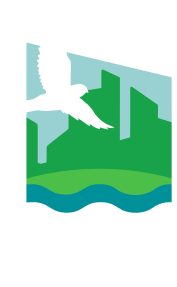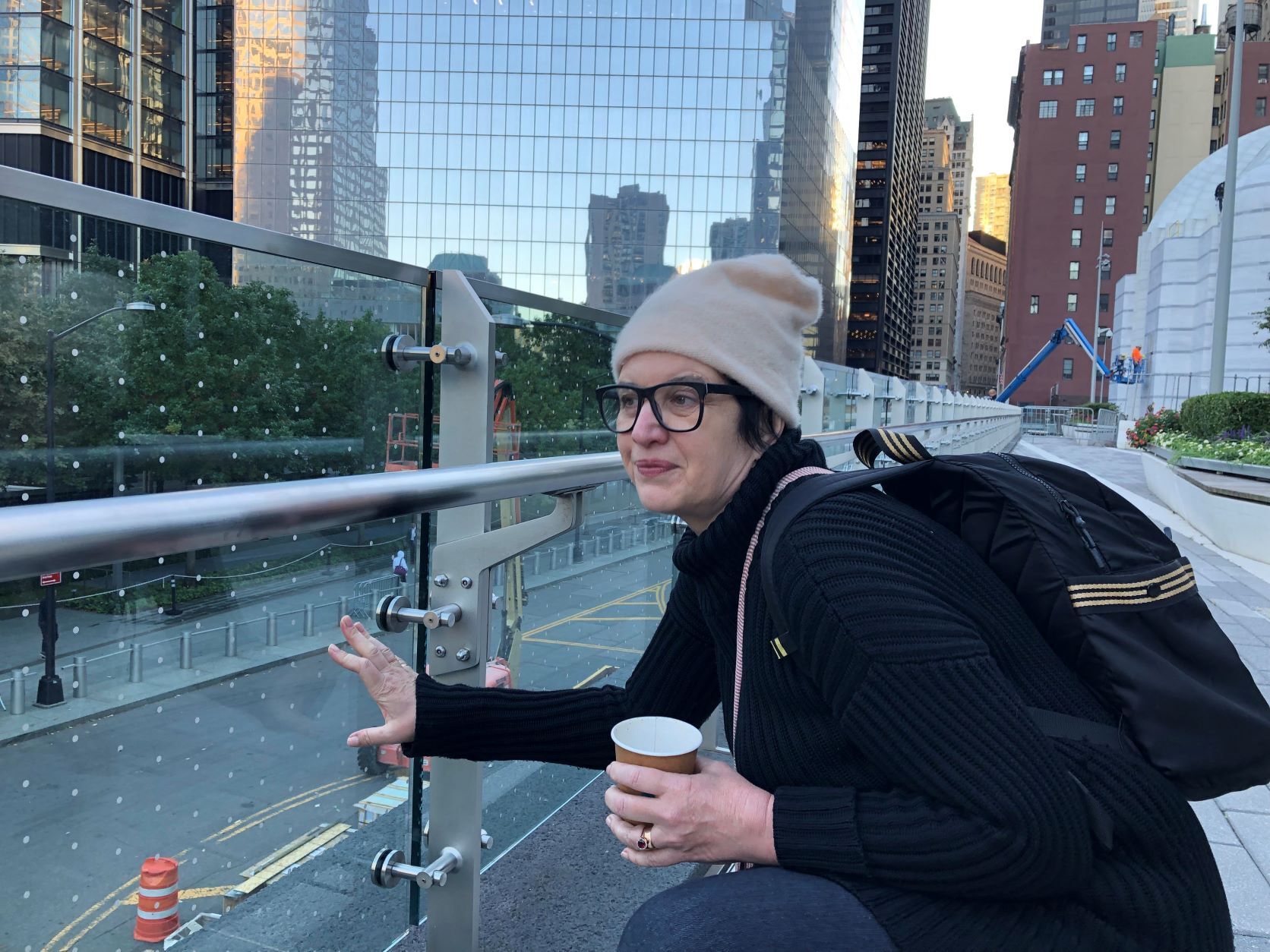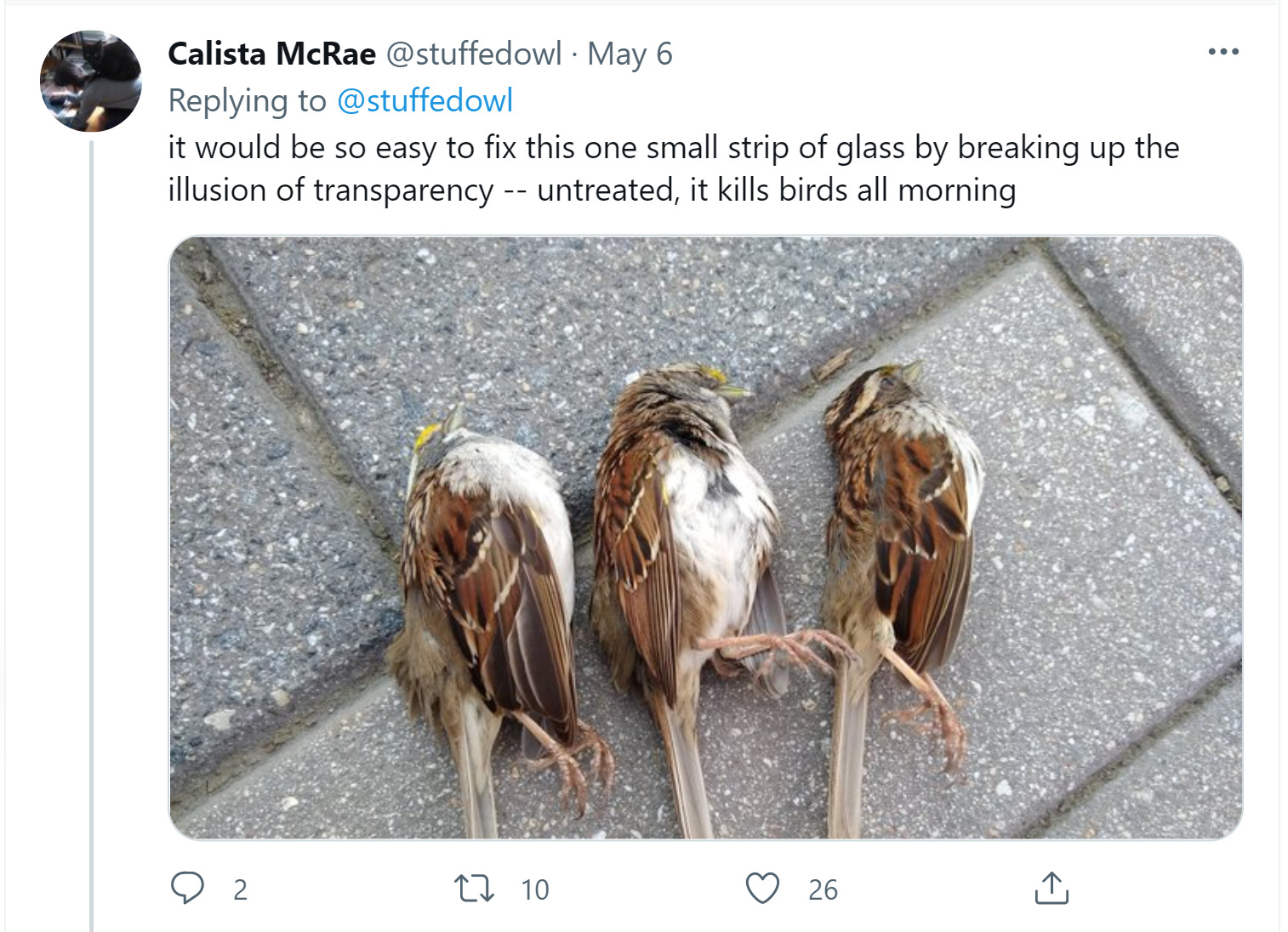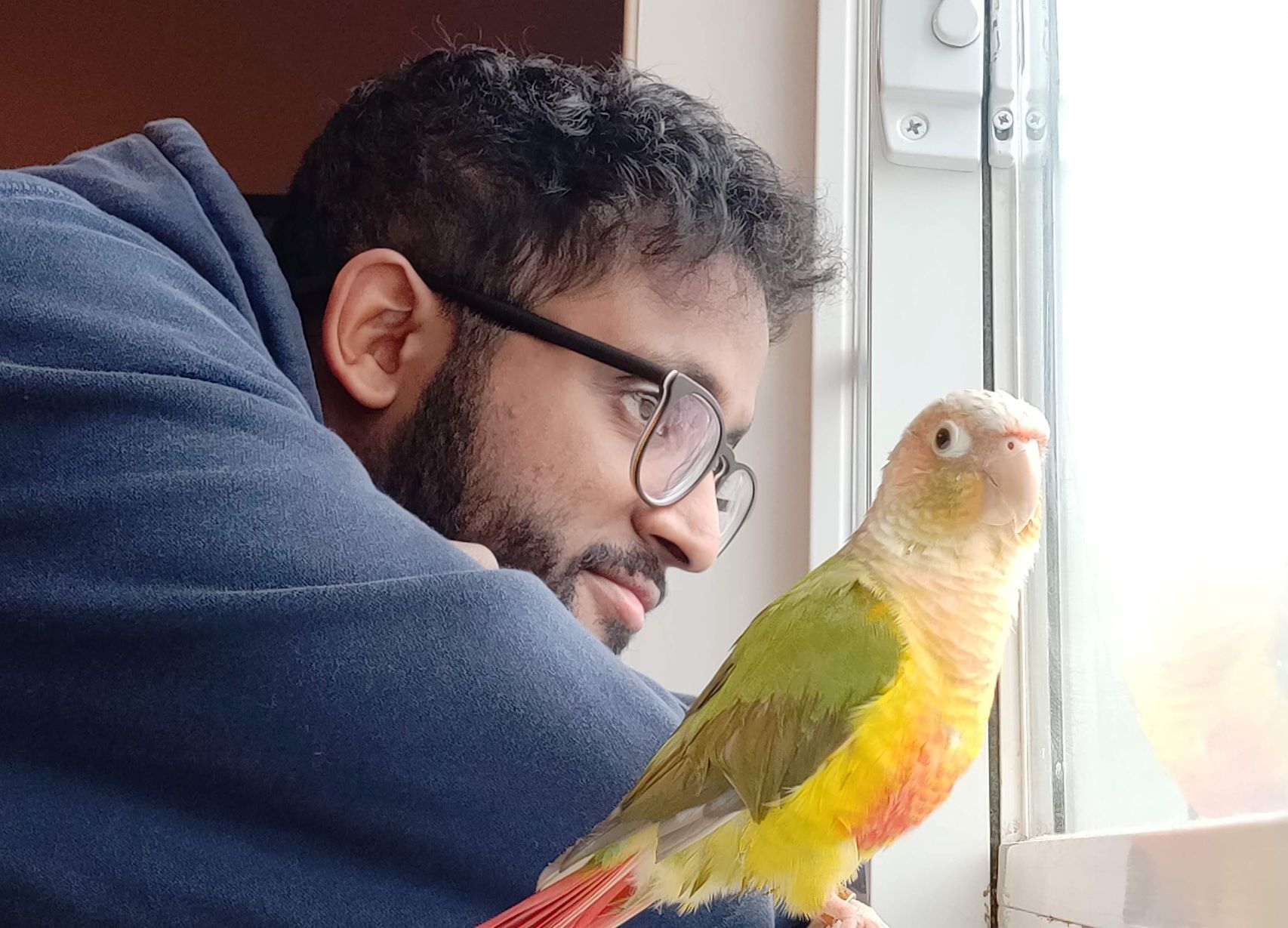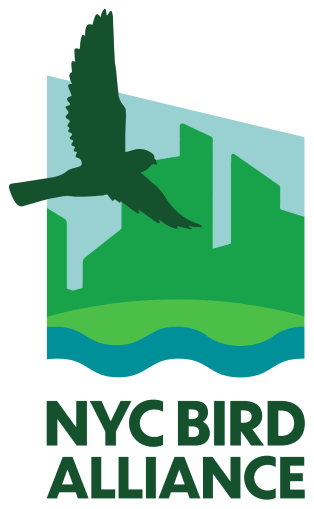Introducing the Volunteers of Project Safe Flight
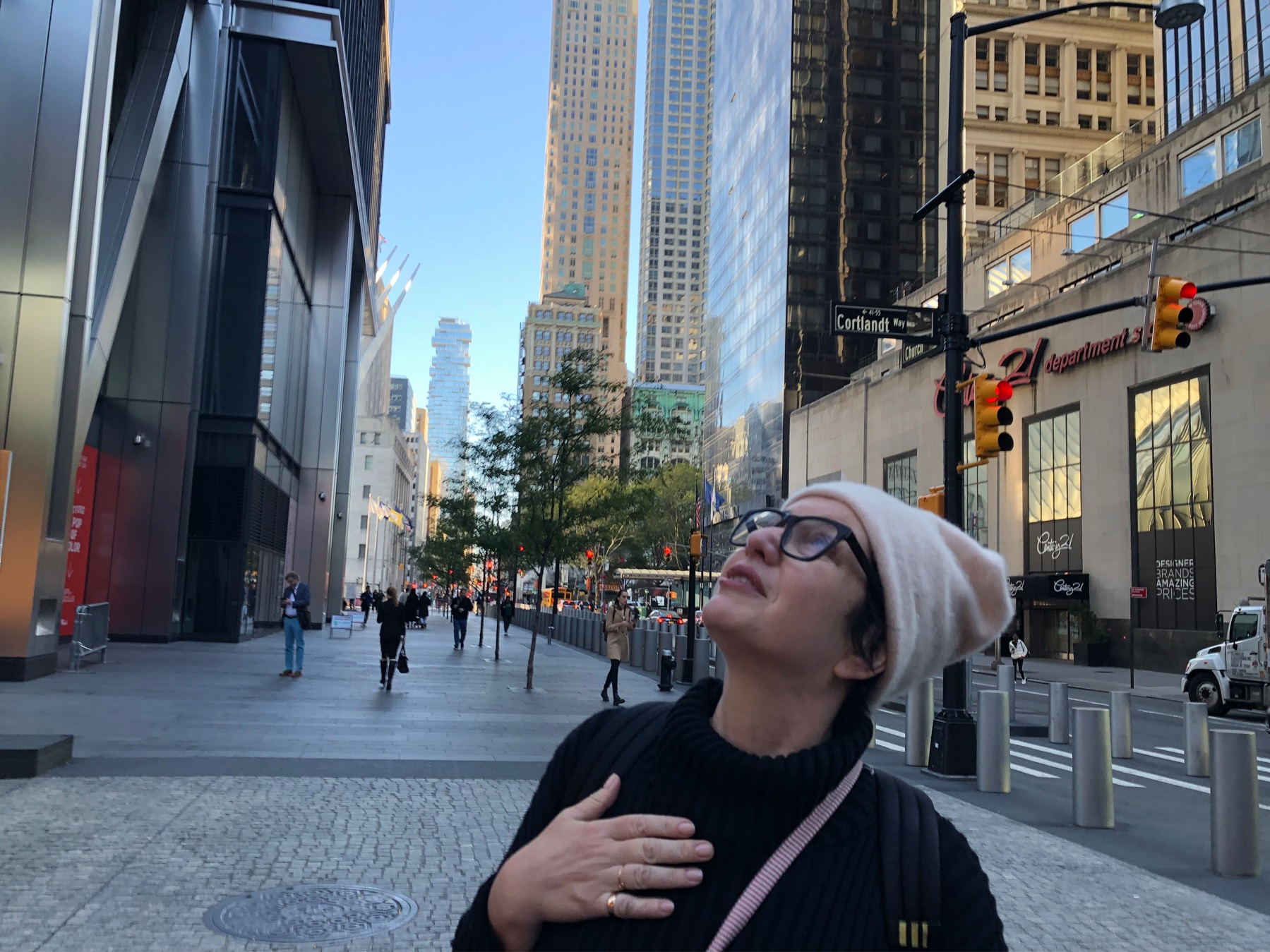
Collision monitor Melissa Breyer looks up at the glass-clad buildings of downtown Manhattan. Photo: Tod Winston
INTRODUCING THE VOLUNTEERS OF PROJECT SAFE FLIGHT
As millions of birds migrate along the Atlantic Flyway in spring and fall, many pass straight through New York City. NYC Bird Alliance’s Project Safe Flight program, founded in 1997, is dedicated to making the City safer for these migrants. Collisions with windows are a huge cause of bird mortality, killing an estimated one billion birds per year across the U.S., and as many as a quarter million birds per year in New York City, according to our Project Safe Flight research. Those local research findings, a rare 25-year data set, have been collected largely by NYC Bird Alliance’s community scientists: dedicated volunteers who patrol the City streets looking for collision victims and ensure that any injured birds have the best chance of recovery.
Today, Project Safe Flight’s volunteers are grouped in three teams: Collision Monitoring volunteers walk a determined route known to be dangerous to birds and record any collision victims found, adding their findings to the Project Safe Flight database. Injured Bird Response Team members receive thousands of calls and emails annually from well-meaning New York City residents, and determine the best course of action to help. Our Injured Bird Transporters then take over, crossing the City to reach birds in need and get them to licensed rehabilitators with whom we have longtime partnerships, such as the Wild Bird Fund on Manhattan’s Upper West Side. These volunteers spend hundreds of hours helping the City’s birds. Here’s your chance to meet some of them.
Four or five days a week, starting at 6am, Collision Monitor and Injured Bird Transporter Melissa Breyer arrives at her World Trade Center territory. “My most emotionally overwhelming day happened there on September 14, 2021. It was a mass casualty. I found 270 carcasses at three buildings—all within 90 minutes. Guards and passersby were helping me, dropping birds in my lap. I also brought 30 injured birds to the Wild Bird Fund.”
The previous year had been no better. In fall 2020, Melissa, fellow Collision Monitor (and Injured Bird Transporter and Injured Bird Response Team member) Calista McRae, and many other volunteers collected more than 1,200 stunned and dead birds at the World Trade Center, in total. Come spring migration 2021, with deaths mounting again, Breyer and McRae tweeted photos and grim statistics. The situation became a major news story, creating an opportunity for NYC Bird Alliance to advise the Port Authority of NY & NJ on retrofitting a particularly deadly glass railing in Liberty Park with bird-safe film. During a recent patrol of the park, Melissa recalled a happy observation, just a week or two before: A Common Yellowthroat, flying rapidly across the park towards the now-bird-safe glass railing, “put on the brakes when it saw the film on the glass—it stopped in midair like a cartoon, and landed on top of the railing!”
Both Melissa and Calista stress that such retrofits are just the beginning, however. “The saddest thing for me continues to be the response, or total lack of response, from people with the ability to change glass,” Calista observes. “But there are moments where it at least feels like you managed to make a difference for an individual bird—when you stop a warbler from being stepped on or get a stunned bird out of a revolving doorway. Or hearing from the Wild Bird Fund that a bird you thought for sure was going to die was eventually released.” Melissa agrees: She’s now taken over 200 birds to the Wild Bird Fund, but still remembers being told that the first injured bird she’d rescued, for which she’d held out little hope, had recovered and been released. “I burst out crying.”
Less dramatic, perhaps, but equally important, is the role of Jairus James, a member of our Injured Bird Response Team. Jairus explains to “often distraught” individuals how to contain the injured bird they’ve found in a paper bag or box, and recommends they transport it to the Wild Bird Fund, if possible, or wait for him to contact an Injured Bird Transporter to do so. “I remember the woman who had trouble bending down to move an injured mourning dove. She got help, then put an umbrella over it and sent me photos.”
He also mentioned those who wonder about pigeons nesting on their air conditioners. “When I mention that moving the nest may cause the parents to abandon it, they actually give up turning on AC for a period of time.” NYC Bird Alliance staff report that Injured Bird Response Team members like Jairus and Calista work long hours, and praise their dedication: “Some evenings, I see the emails shooting back and forth till the middle of the night,” says Associate Director of Content Tod Winston.
And by the way, though Jairus does his volunteering remotely, he does get personal with certain birds—like his three gorgeous pet parrots, named Apple, Mango, and Kiwi.
Last there’s Collision Monitor Divya Anantharaman, a taxidermist by trade who has had to tell clients who’ve found dead birds that she cannot stuff their specimens for their own display purposes because the victims must go to museums or research centers. Her monitoring route is in Brooklyn Heights. “Finding dead birds,” she says, “is so upsetting because it’s all so preventable. Most problems today are huge and insurmountable, but this is so easily fixed.” She spreads the word about bird-friendly glass to building staff and to anybody who expresses an interest in what she’s doing. She mentions 1 Hotel Brooklyn, which added bird-friendly treatment this past summer. “I haven’t found any casualties there this season,” she thankfully reports. (Read more about this success story.)
Thanks to the efforts of Community Science and Outreach Manager Katherine Chen, hired earlier this year, our volunteer corps is still growing. We look forward to introducing more NYC Bird Alliance volunteers in the next Urban Audubon.
Learn more: Read a report on the September 14, 2021 mass collision event, including Melissa Breyer’s photos, in Conservation Notes in the winter 2021-2022 Urban Audubon.
